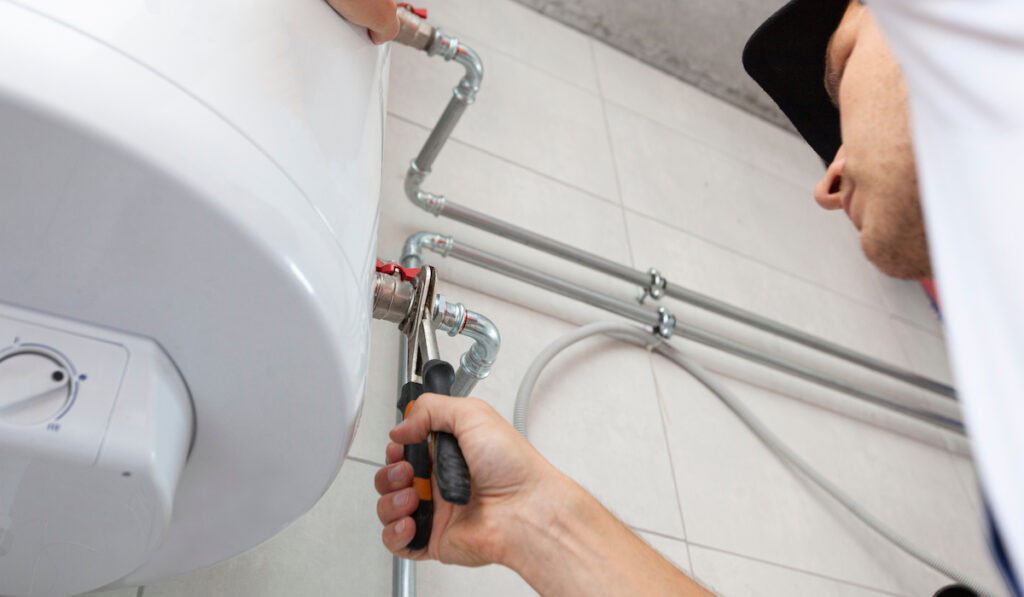This post down the page about What Kind of Maintenance Do Water Heaters Need? is extremely intriguing. Don't bypass it.

Hot water is necessary for daily convenience, whether it's for a refreshing shower or washing recipes. To ensure your warm water system runs efficiently and lasts much longer, routine upkeep is crucial. This post gives useful pointers and insights on exactly how to keep your home's hot water system to prevent disruptions and pricey repair work.
Intro
Keeping your home's hot water system may appear challenging, however with a few basic actions, you can guarantee it operates smoothly for many years ahead. This guide covers every little thing from understanding your hot water system to DIY upkeep pointers and knowing when to contact specialist help.
Value of Keeping Your Warm Water System
Normal maintenance not only extends the life expectancy of your hot water system but likewise ensures it operates effectively. Disregarding upkeep can result in reduced effectiveness, greater power expenses, and also early failing of the system.
Signs Your Hot Water System Needs Maintenance
Knowing when your hot water system needs attention can prevent major problems. Watch out for indications such as inconsistent water temperature, unusual noises from the heater, or corroded water.
Purging the Hot Water Heater
Purging your water heater eliminates sediment buildup, improving effectiveness and prolonging its life.
Checking and Replacing Anode Rods
Anode poles protect against deterioration inside the storage tank. Checking and changing them when worn is important.
Complicated Issues Requiring Specialist Aid
Instances consist of major leaks, electric issues, or if your water heater is regularly underperforming.
Routine Specialist Upkeep Conveniences
Expert maintenance can consist of detailed assessments, tune-ups, and making sure compliance with security standards.
Evaluating and Changing Temperature Setups
Changing the temperature setups guarantees ideal efficiency and security.
Do It Yourself Tips for Maintenance
You can do a number of maintenance jobs yourself to maintain your hot water system in leading problem.
Checking for Leaks
Regularly evaluate pipes and links for leaks, as these can bring about water damages and higher costs.
Comprehending Your Hot Water System
Prior to diving into upkeep tasks, it's practical to understand the basic parts of your hot water system. Commonly, this includes the hot water heater itself, pipes, anode poles, and temperature controls.
Month-to-month Maintenance Tasks
Normal monthly checks can assist capture minor concerns before they rise.
Evaluating Stress Relief Valves
Checking the stress relief valve guarantees it functions appropriately and avoids too much stress accumulation.
Shielding Pipes
Protecting warm water pipes minimizes heat loss and can save power.
When to Call a Specialist
While DIY upkeep is beneficial, some concerns require expert experience.
Conclusion
Routine upkeep of your home's warm water system is important for effectiveness, longevity, and cost financial savings. By adhering to these pointers and knowing when to seek expert aid, you can guarantee a trustworthy supply of warm water without unexpected disruptions.
How to Maintain an Instant Hot Water Heater
Before tinkering with your hot water heater, make sure that it’s not powered on. You also have to turn off the main circuit breaker and shut off the main gas line to prevent accidents. Also turn off the water valves connected to your unit to prevent water from flowing into and out of the appliance. 2. When you’re done, you have to detach the purge valves’ caps. These look like the letter “T†and are situated on either side of the water valves. Doing so will release any pressure that has accumulated inside the valves while at the same time avoid hot water from shooting out and burning your skin. 3. When the purge valves’ caps are removed, you have to connect your hosing lines to the valves. Your unit should have come with three hoses but if it didn’t, you can purchase these things from any hardware or home repair shops. You can also get them from retail stores that sell water heating systems. Read the user’s manual and follow it to complete this task properly. When the hosing lines are connected, open the purge port’s valves. 4. You should never use harsh chemical cleaners or solutions when cleaning your unit. Make use of white vinegar instead. It should be undiluted and you’ll probably use about 2 gallons. 5. Now flush your water heater. This task should probably take about 40 minutes. We can’t give you specific directions for this because the procedure is carried out depending on the type, model and brand of your heater. With that being said, refer to the user’s manual. 6. When you’re done draining the unit, you have to turn off the purge port valves again. Remove the hosing lines that you earlier installed on each of the water valves. Put the valve caps (purge port) back in their respective places and be very careful so as not to damage the rubber discs that are found inside these caps. 7. Now that everything’s back in place, check your user’s manual again to find out how to reactivate your water heating system. 8. Once it is working, turn one of your hot water faucets on just to let air pass through the heater’s water supply pipes. Leave the tap on until water flows smoothly out of it. https://www.orrplumbing.com/blog/2014/september/how-to-maintain-an-instant-hot-water-heater/

As a fervent reader about How to Maintain Your Water Heater & Prolong its Life, I think sharing that piece of content was really useful. Be sure to pause to promote this write-up if you enjoyed it. We recognize the value of reading our article about What Kind of Maintenance Do Water Heaters Need?.
Visit Our Site